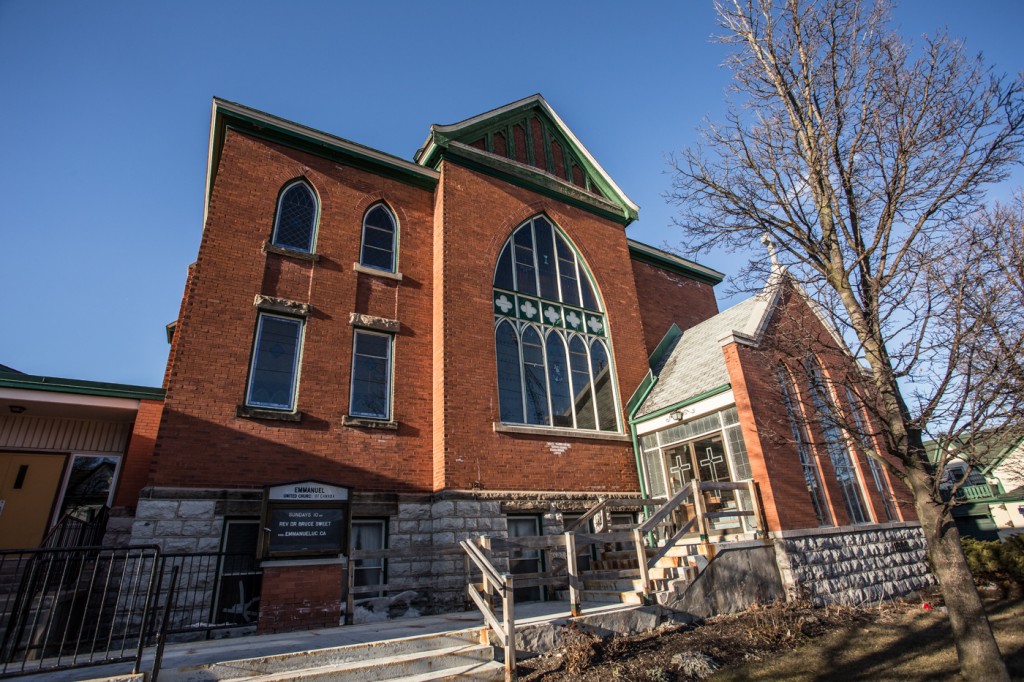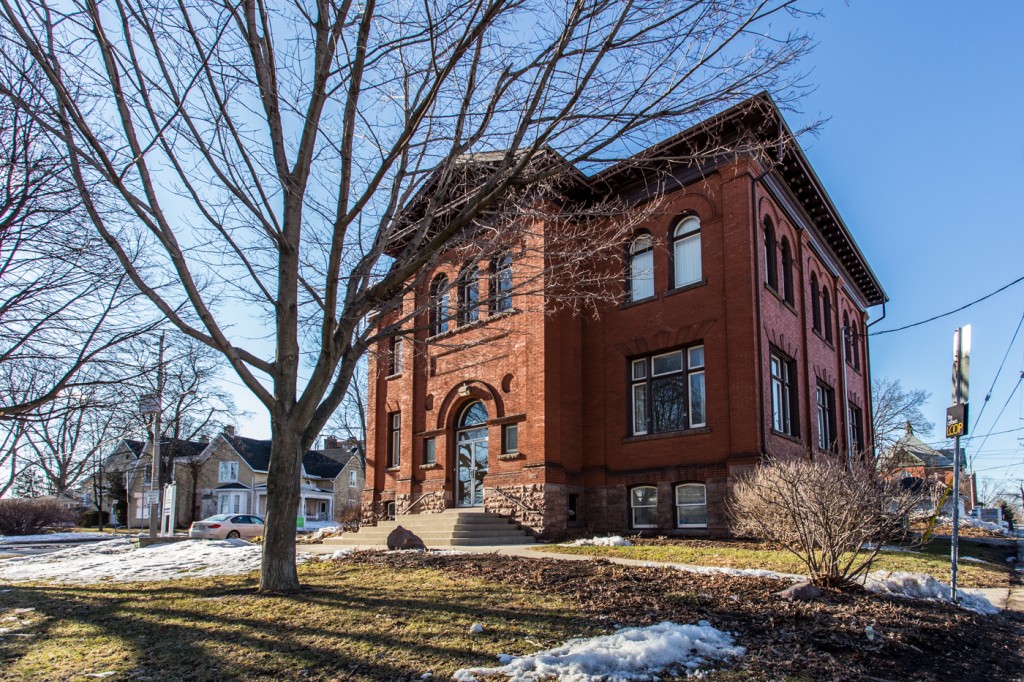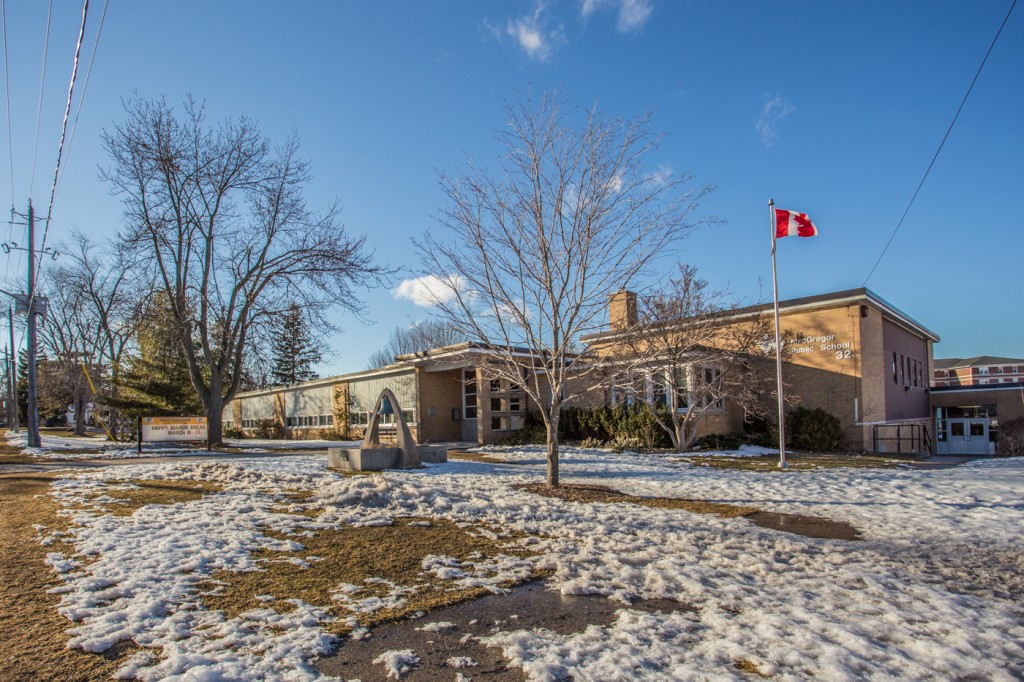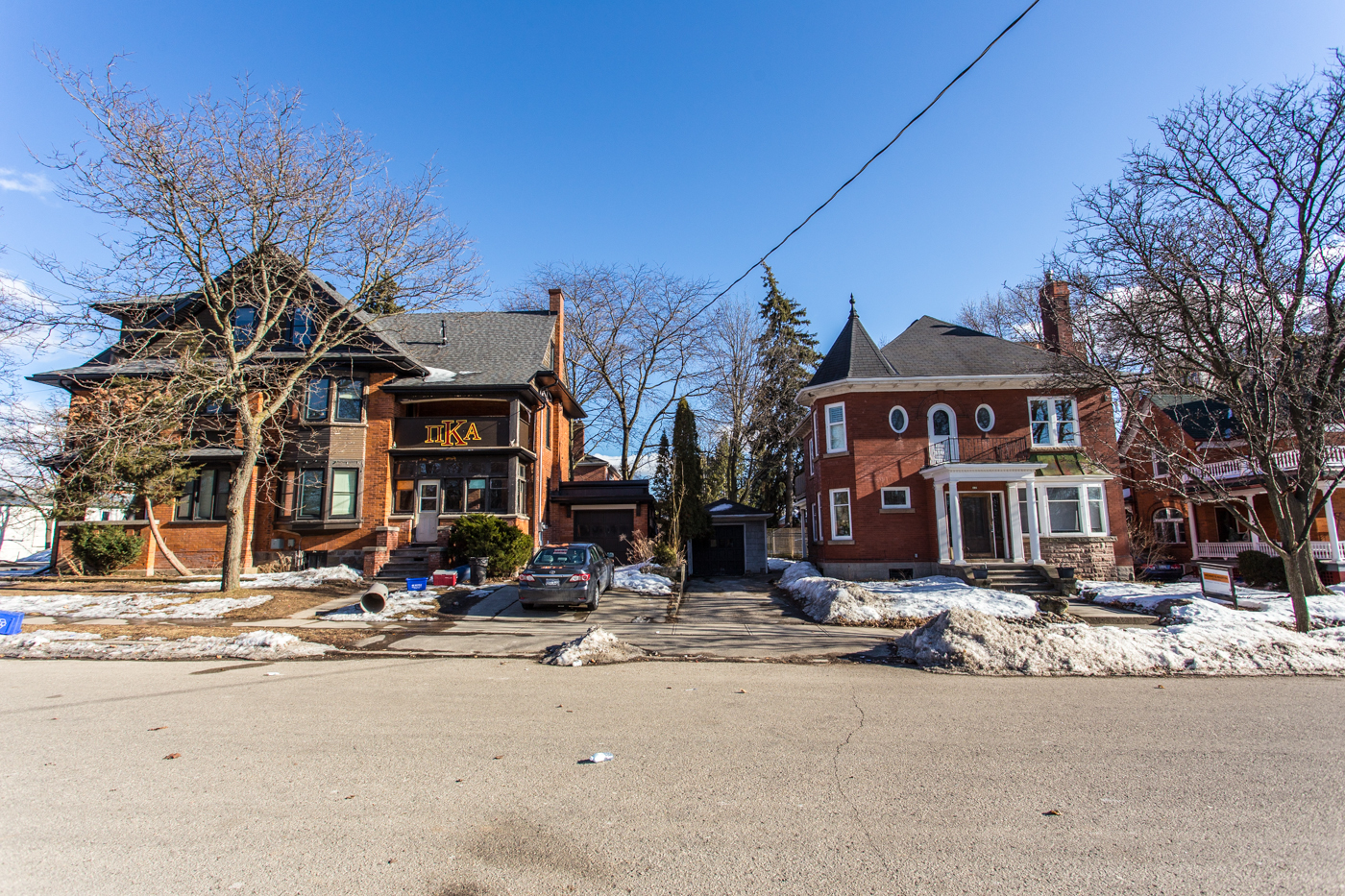Andrew Morgan
URBAN EDITOR
A close neighbour to uptown, Wilfrid Laurier University and Waterloo Park, MacGregor-Albert has always been on the front lines in a growing Waterloo. The history of Waterloo can be traced in its streets and houses, but the story of MacGregor-Albert is not yet done. Beneath the facade of century homes and converted rental buildings, on the hills where the original blueprint for Waterloo was laid, this community is charting its way forward in spite of seemingly immovable forces at its gates.
The neighbourhood stands on land first owned by pioneer Abraham Erb. Houses were built on the high land north of Erb’s mill and town hall, the fire hall and the market (where the Waterloo Public Library stands today). Erb is also credited with founding Waterloo’s first school in 1820, near what was then called Church Street. When people came to settle in the Village of Waterloo, owners and workers of industries like Erb’s mill and Karl Mueller’s cooperage, in shops on King Street or local farms, it was common to purchase two half acre lots in the hills over the mill. As families grew, the properties were infilled with new homes and subdivided.

In those days, Albert-MacGregor was a community of extended families. It’s a lot like the story of how lifetime resident of MacGregor-Albert, Sue Mansell, came to the area. Mansell lives in a home designed and built by her father for his parents, built in the 1940’s in the garden of her uncle next door. Mansell’s father built another house for a family member on the same block. She recalls attending school down the street at MacGregor Public School and a booming gang of kids in the neighbourhood to play with.
The most recent census put MacGregor-Albert’s population at 428, but only counted 30 residents under the age of 15. This shift in demographics is attributed to what was happening to nearby schools – some were closing, and another was expanding. Once, the neighbourhood children would attend Alexandra, Brighton or MacGregor Public School. Alexandra and Brighton were closed in the 80s and MacGregor now only offers grades 6, 7 and 8. By the time Mansell was raising her own family in that same home built by her father, children were bussed or driven to schools beyond the neighbourhood. Without active schools nearby, the arrival of young families slowed to a crawl. Meanwhile, down the street, local universities were growing and MacGregor-Albert was fast-attracting another breed of youngster.
Carrie Stevenson likes to joke that she tries to meet her university student neighbours, so they might think of her face before watering her lawn on their way home from the bars at night.

As demand for off-campus student housing rose, property owners in Albert-MacGregor cashed in and got out, selling their homes to would-be landlords. The Stevenson’s live between two such rental properties, and in the ten years since moving in have had some negative experiences with noise and vandalism.
But Stevenson points out that students are a part of the neighbourhood, too.
“Those are annoyances we’re willing live with given all the positives,” she says, adding, “we can’t keep building an ‘us versus them’ environment.”
In fact, many find that overall the students bring an activity and youthfulness to the neighbourhood. Like Carrie’s approach to dealing with unsolicited lawn sprinklers, the community makes an effort to show students they are part of the community through actions like welcoming new students to the area each fall and inviting students to the odd community BBQ.
“I like having them,” says Heather Read of her neighbours, a WLU frat house, “I think the guys are trying really hard to be part of the neighbourhood.”

Stories of community spirit are easy to find in MacGregor-Albert. Take Emmanuel United Church, on Bridgeport Road. Inconspicuous from the outside, the church is a hub of community groups and services from youth group to senior centre.
“Emmanuel has always looked outside its walls to be a fully functioning member of the community,” the Church said in a statement.

No neighbourhood is without on-again-off-again community activists. By the account of one resident, Betsy Abbott, it all began in the 1970s with a proposal to widen Albert Street for increased traffic. A coordinated push back from the neighbourhood, complete with “SOS – Save Our Street” tshirts was reasonably successful; instead of widening, the City decided left turn lanes at Central Street and at Seagram Drive. And so MacGregor-Albert developed its capacity to mobilize and get engaged.Betsy tells the story of one woman, who, in the days before council agendas were available to the public, would knit during council meetings, with an ear tilted toward the front of the room, listening for anything her neighbours need to know. Others would collect background research, make presentations to council or join committees.
Some even credit the neighbourhood and their intelligent approach to political matters for starting discussions that gradually lead to the 2003 Height and Density Study, the 2004 Student Accommodation Study and the Rental Housing Licensing By-law, documents that are shaping how Waterloo grows and develops.
But the neighbourhood’s top accomplishment has to be the establishment of the MacGregor-Albert Heritage Conservation District, Waterloo’s first and, to date, only heritage district. The heritage district, which establishes policies to conserve the character of a neighbourhood as it grows, was a real grassroots initiative.
“People just step up,” says Abbott, a fact about her neighbourhood that she’s proud of.
In March, a group of interested community members gathered fora soup party. It was a party with a purpose, and on the agenda was the possibility of forming an official neighbourhood association. For all of the past political involvement by the community, there had never been an official neighbourhood group. Homemade soups, stews, chilis and desserts were munched at the same time as neighbours discussed and raised questions about what should be done. At the front of the room, Stevenson and the others behind this meeting speak over little shoes stomping around the gym; noding to a success story for MacGregor-Albert – young families are returning to the neighbourhood. The soup party was held at MacGregor Public School, which is built on the original grounds of that 1820 log schoolhouse. It was the perfect setting for the next chapter of MacGregor-Albert to begin.


